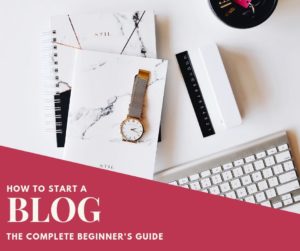A Guide To Ebay For New Sellers
I am an affiliate with links to an online retailer in this blog post. When you read what I have written about a particular product and click on that link and buy something from the retailer, I can earn a commission. Please note that I only recommend products that I truly believe in and use in my business. Please read my full disclaimer here
The following is a guest post written by Josh Wardini from 16best.net.
EBay is the perfect online marketplace if you want to buy or sell literally anything, whether it’s something new, old, collectible or downright strange.
In 1995, Pierre Omiyadar started eBay under the name AuctionWeb with a goal of establishing an online marketplace which would connect buyers and sellers.
Fun fact: the first item sold on eBay was a broken laser pointer.
Baffled by this purchase, Omiyadar called up the buyer to double-check that he knew it was broken. Omiyadar was surprised by his response; the buyer was a collector of broken laser pens.
How Did Ebay Begin
After operating for two years with lots of success, AuctionWeb changed its name to eBay (short for Echo Bay, a name which was already being used).
Over the years, eBay has gone from strength-to-strength acquiring all sorts of other businesses and organisations primarily operating within the e-commerce industry, such as Gumtree.
Ebay Now
Ebay now operates in all corners of the globe and turns over billions of dollars in revenue each year.
In 2017, they made $8.7 billion! eBay currently employs over 12,600 employees and has buyers and sellers operating on the platform from over 190 different countries.
With 168 million active users, eBay is home to some one billion items, 81% of which are brand new and sold by 6.7 million sellers. Each second, $2,000 worth of transactions take place on eBay.
Buyers flock to the e-commerce platform because of the regular discounts and promotions eBay has, which can lead to huge savings!
Selling on Ebay: Mistakes to Avoid
Setting up shop on eBay and selling items can be a lucrative and rewarding past time. In fact, some people make a full time income from it.
Some people may find it overwhelming when they first discover eBay; it’s not the simplest site in the world.
The most common problems people have is that they don’t know where to start and what to do to begin seeing success.
But, when you’re running an online business, it is all too easy to make mistakes which can have devastating consequences.
It doesn’t matter if you’re an experienced or new seller, everybody makes mistakes, but you should be careful not to make ones which can easily be prevented.
1. Reduce incomplete checkouts
If you run an e-commerce store on eBay, you must know that cart abandonment constitutes about 60%-80% missed revenue.
These are general statistics, as eBay doesn’t feature a shopping cart monitoring option, nor does it allow you to send email reminders to shoppers who abandon their full shopping basket before checkout.
However, there are several optimization techniques to help you optimize your eBay shop so that the cart abandonment rates drop naturally. They are very easily applicable:
- Allow guest checkout – Shorter and easier checkout process facilitates greater sales volume.
- Multiple payment options – PayPal is great but not everyone uses it, even on eBay; provide all the payment methods you can to help people buy easily.
- No hidden fees – List all fees applicable beforehand so that customers know what they are paying for.
2. High shipping prices
This is a huge turn off for potential bidders and buyers. Highly inflated shipping costs are always very obvious to potential buyers; they are not stupid.
The average customer has an idea of what it costs to ship a package.
Do not try and earn an extra buck or two by inflating your shipping costs. The purpose of shipping costs is to pay for shipping and that’s it. You should not view it as another profit stream.
Whilst on the topic, why not offer free shipping? Sure, it eats into your profit a bit, but customers love it and you’re more likely to attract more bids and purchases if you offer something as simple as free shipping.
3. Incomplete item listings
It is very important to have a fully completed listing. This means an accurate and well written description and lots of good quality pictures.
If you cannot describe what your item is to a buyer or show any pictures, you’re not going to sell it.
Images should be of a high quality and show the product from all angles and highlight any minor defects on the product, just to cover your back.
4. Not answering questions
You will almost certainly have potential buyers asking you questions. Yes, it can be annoying. Yes, they take time to answer. Yes, you should still do it.
Nobody likes to be ignored, not least potential customers.
If somebody asks you a question about your auction or product, answer it as soon as possible and always be polite, helpful and friendly.
Even if the potential customer isn’t, you need to remember you’re selling a product and should provide good customer service.
Selling on eBay: Getting Started
Now that we’ve covered the most important part – mistakes to avoid – let’s look at getting started on eBay.
The important thing to know is that eBay is big. Like, really very big, as we have already seen. If you do it right, you can turn eBay into a very successful side business and earn a nice profit.
It isn’t just as simple as diving onto the platform and listing your items though, oh no. You have a lot to learn yet.
eBay has rules and fees which you really need to know about first.
This may seem like a lot of information but knowing all the right things before getting started can be the difference between success and failure.
The rules related to selling
Ebay isn’t some wild e-commerce site where you can sell anything you’d like to. There are plenty of rules which you must follow, and these are designed to protect buyers.
Before you list any items, make sure that you are complying with these rules. This helps prevent problems early on and builds trust with your customers.
There are a number of items which you cannot sell on eBay, including –
- Firearms and weapons
- Illegal services
- Chance listings (lotteries, raffles, giveaways)
- Offensive content (pornography, etc)
There are also rules related to something called “keyword spamming” where a seller fills their listing with keywords and phrases which people will be searching for in Google and eBay, making their listing show up first.
Your listings should be informative, precise and well written to increase your chances of success. Your listings cannot include any profane language, either.
You should not use any language which can be perceived as offensive on your eBay page, listings or anything else which links back to your eBay store.
Sellers pay fees, too
You pay a small fee on each sale which goes back to eBay, helping to keep the platform running.
The amount which you pay depends on a couple of factors, including:
- whether you’re a private or business seller and
- the number of items you list per month
There are lots of fees which you need to understand fully before selling.
As a private seller, your first 20 listings per month are fee free and then after that, you pay a final value fee (10%) on your sales.
As a business seller, you can pay a subscription for unlimited fixed-price listings and you need to pay tax on your sales. This depends where you’re selling from, though.
I bet you’re now wondering whether to set up a private or business account, aren’t you? Well, it’s actually very simple. You should register as a business seller if you sell:
- items which you bought to resell (reselling)
- items you produced yourself
- new items
- lots of goods on a regular basis
Selling on eBay: Listing Your First Item
When you’ve read all of the above and understand it (and have done some research of your own) you’re ready to get started and list your items!
It is easy to list an item, but it is not so easy making that all important sale.
There are a few things you can do to optimize your listing and make it more likely to sell. Make sure your product is in line with the current market standards to ensure that people are enticed to buy it.
Before you list your item, you should check out some of the competition you’re up against.
To do this check the search listings for items which are similar (or the same) as yours.
For example, if you are selling vintage table furniture, enter your keyword into the search field then filter the settings using the menus available on the left.
Paying attention to the results that you see take note of the following points:
- price – how much are your competitors selling it for? Does your price beat sites such as Amazon?
- availability – how commonly is your item sold? The more common an item is, the higher the competition and the harder the sale
- unique – what’s unique about your item? Think of a unique selling point and use it to make your listing stand out against competitors.
When you’ve got all this information, you’re ready to make your listing.
There is an art to making a good listing and you’ll see plenty of options and boxes for you to fill out. Let’s go through some of the main ones:
- title – the name of your item, simple!
- condition – be honest here and list your item properly. Is it new or used? It’s not rocket science! Don’t list a ‘new’ item and then send a ‘used’ one or you’ll get bad feedback.
- photos – you can add 12 photos for free so add as many as possible. Show the item from every angle and show any defects clearly, exaggerate them so the buyer can’t say they weren’t aware of them.
- details – this is your main sales pitch. Create a well written, honest and straight to the point description which describes the item as it is. Use short sentences and keep the description simple; buyers don’t want to read long paragraphs.
Here is a step by step walk-through of your first listing on eBay. To start go to Ebay.com then click on Sell.
Next enter the keyword for the item that you would like to sell. In this case I will enter vintage table furniture.
Ebay will highlight the relevant category for your listing. Once you see the relevant category select it then press the blue Sell It button.
Next eBay will provide you with other listings similar to yours to help you get started. You can either select one of the existing listings which are similar to yours or if you cannot see it select the link Create A New Listing.
You will then be prompted to sign up for eBay if you are an existing user or to register a new account. Once you have signed in or registered a new account you will be taken to the Create A New Listing Page.
Product Details
Enter your title. When writing a title think of how a buyer will search for your item.
For example, a buyer will not search Debenham’s vintage table. Rather they will search “vintage table” so you want to make sure that the keywords you enter into the title field are exactly what you think a buyer will search for.
This will help eBay’s algorithm identify your listing and bring it in front of your potential customer’s eyes.
If you want to enter a subtitle such as a more descriptive introduction to your item then you can do so. This also helps improve your chances of your listing appearing in the search results.
As mentioned before avoid keyword stuffing. So do not use this opportunity to only enter the keywords “vintage table” over and over. Enter a meaningful description such as “multi-purpose well varnished wooden vintage table”.
Next enter the universal product code (UPC) if you have one, the condition of your item and add images.
Take advantage of the free image allowance to give your potential buyer a detailed view of what the image looks like so they can make an informed decision about their purchase.
Ebay recommends item specifics to help you describe your item in detail.
This helps the viewer understand exactly what they are purchasing so complete as many of the points here. Also when writing your item description be clear and precise and provide as much helpful information to educate the buyer.
Should eBay’s listings not have the information you require then you have the option to enter your own.
Selling Details
Selling Format
Ebay allows you to list your item as an auction or fixed price.
When you list your item as an auction you give viewers the chance to bid on your item and the highest bid wins.
Therefore when starting your bid price, I would recommend starting the bid at a price that you will be comfortable selling it at in the event you have a low bid count. You must also be aware that starting the bid at a high bid price can turn off potential bidders so use wise judgement when applying your start bids.
If you list your item at a fixed price, then this is the amount that you want your buyer to purchase the item at.
Shipping Details
It is important to select the correct item location so if you allow customer pick up, the customer will know whether the item is local to them and can therefore make arrangements to collect the item.
Fees
Finally eBay will let you know how much it will cost to list your item depending on the information you provided in the listing.
The fees only become payable once your item has sold.
Why Sell on eBay?
eBay is a great platform, especially if you’re a creator who sells very unique or handcrafted items. Plus, eBay’s branding ability beats out competitors such as Amazon.
On Amazon, you can’t have a real presence like you can on eBay. On eBay you can create your very own store and brand it with your business niceties.
On Amazon, customers interact with Amazon – not you – and they get no personality or get exposed to your brand identity.
eBay is very flexible and provides a lot of control to sellers. You can promote your listings with text and images which you choose, and eBay goods are sold with minimal confusion. The same cannot be said about Amazon, who dictate everything on the item’s listing.
Plus, eBay’s returns policy is a 14-day window and you can choose to not accept returns if you so choose.
On Amazon, their returns policy is site-wide and applies to all sellers; a buyer can return an item within 30 days for any reason.
eBay also gives you instant access to revenue because sales are paid through PayPal. As soon as the buyers pay you, that money is available and can be withdrawn to your bank account.
On Amazon, sellers wait 14 days for their funds to be released to their Amazon Payments account, then a further week to transfer it to their bank; it’s a no brainer!
Amazon does not have the same global reach which eBay does, in terms of sellers anyway. At the moment, you can only sell to customers on Amazon in countries which it supports (Western Europe, China, Japan and the US.)
If you’re big on international sales, then you’re better off selling on eBay which has a global reach.
eBay is also so much easier to get started with. With eBay, you can get started within minutes so long as you have a PayPal account and an item to sell, of course! It truly is the better platform for sellers at the moment.
Want to learn more about eBay? There’s a lot of history to this e-commerce giant!
Below, you can find our beautifully designed infographic which is full of interesting eBay-related facts, figures and history and plenty of tips for first-time sellers finding their feet on the platform. Check it out!
Josh Wardini, Editorial Contributor and Community Manager at www.16best.net. With a preliminary background in communication and expertise in community development, Josh works day-to-day to reshape the human resource management of digitally based companies. When his focus trails outside of community engagement, Josh enjoys the indulgences of writing amidst the nature conservations of Portland, Oregon.
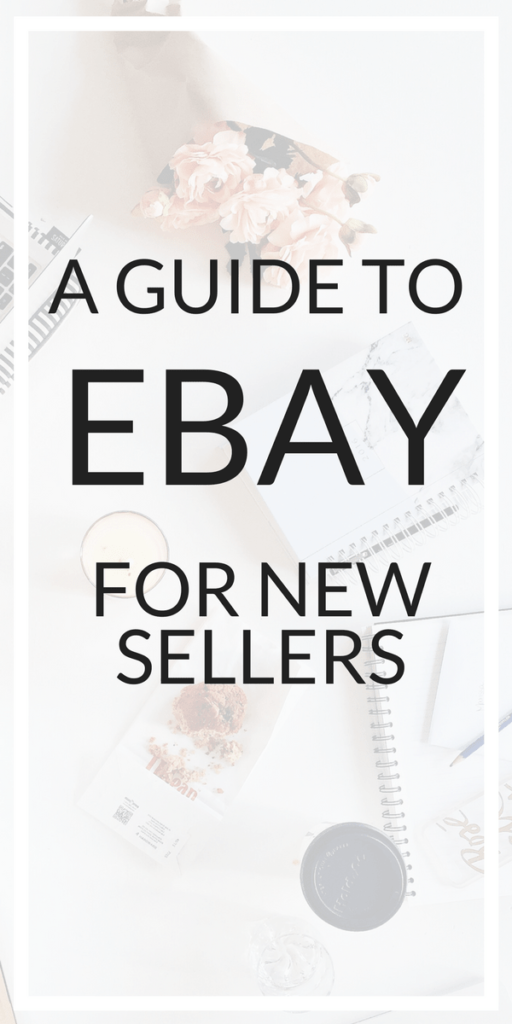
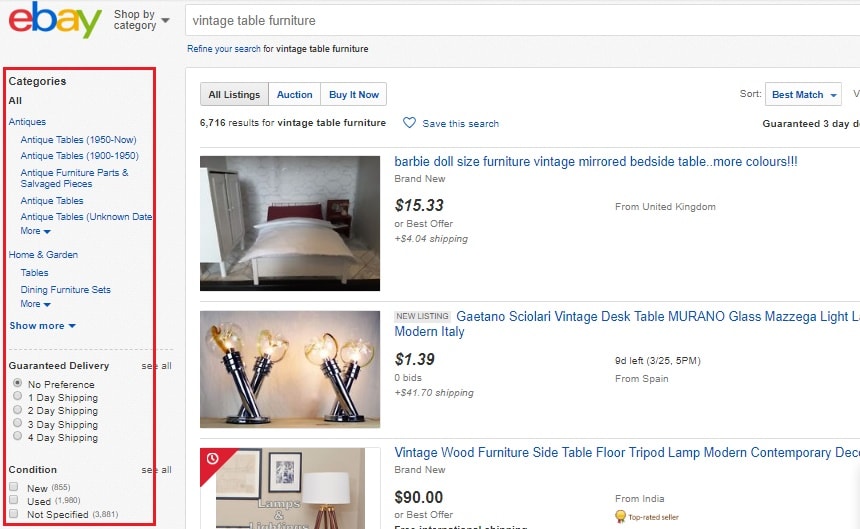


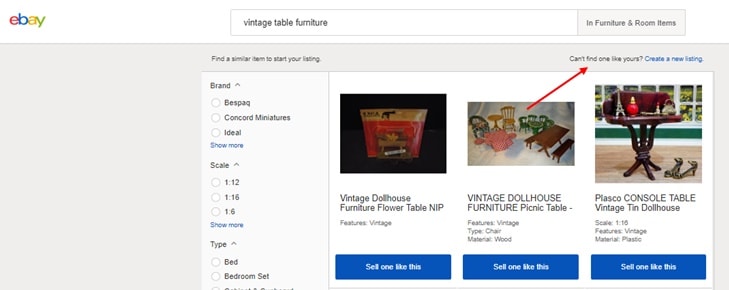

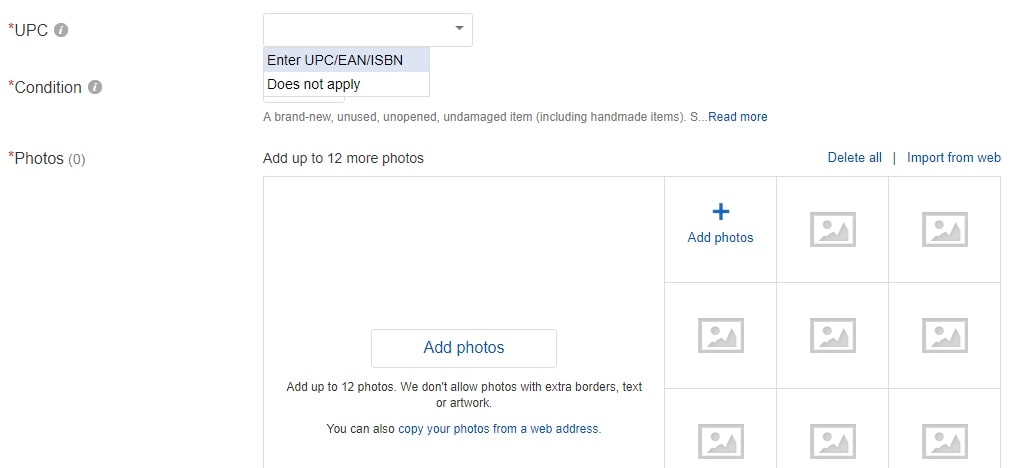
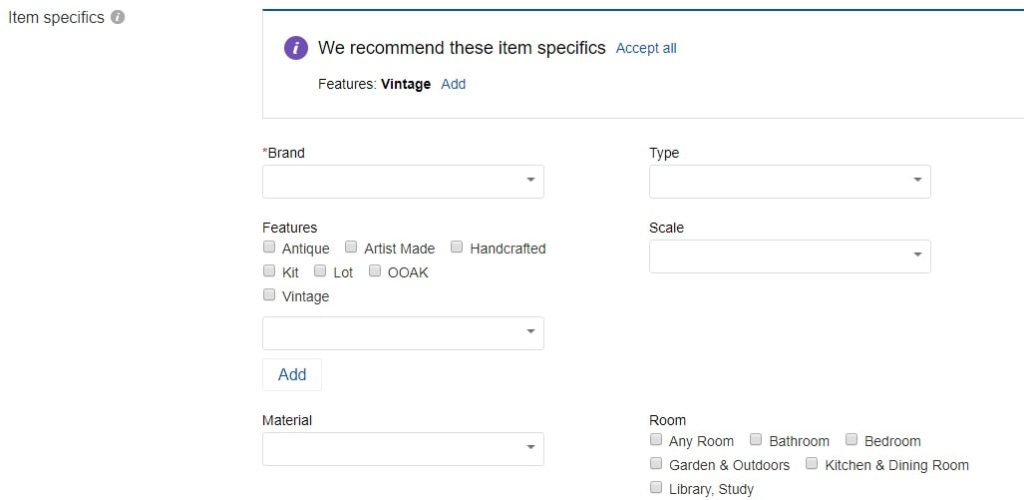
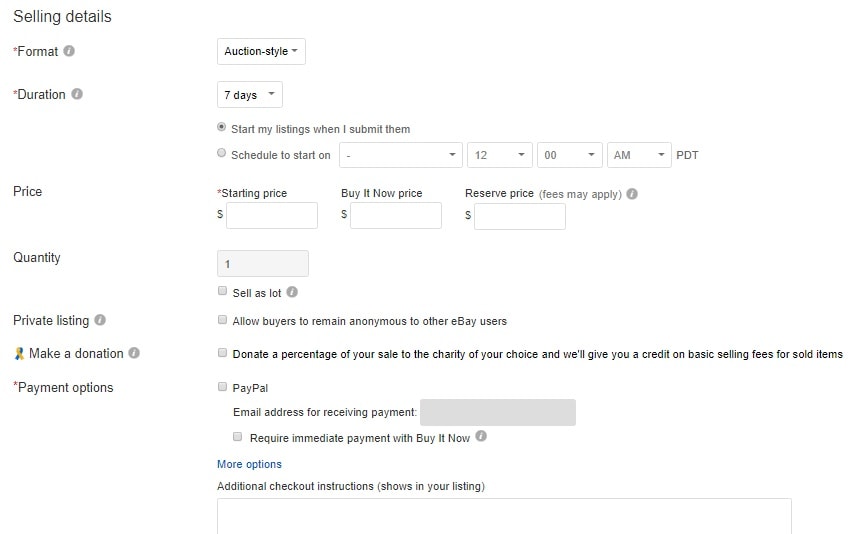
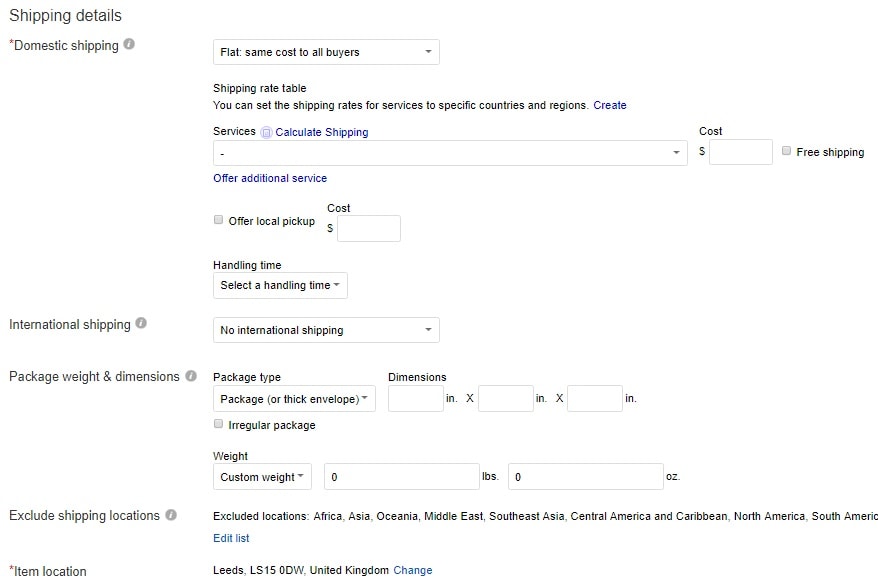


 Previous Post
Previous Post Next Post
Next Post
